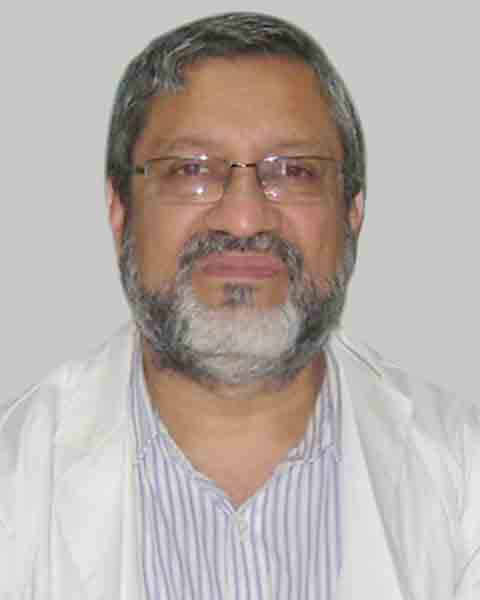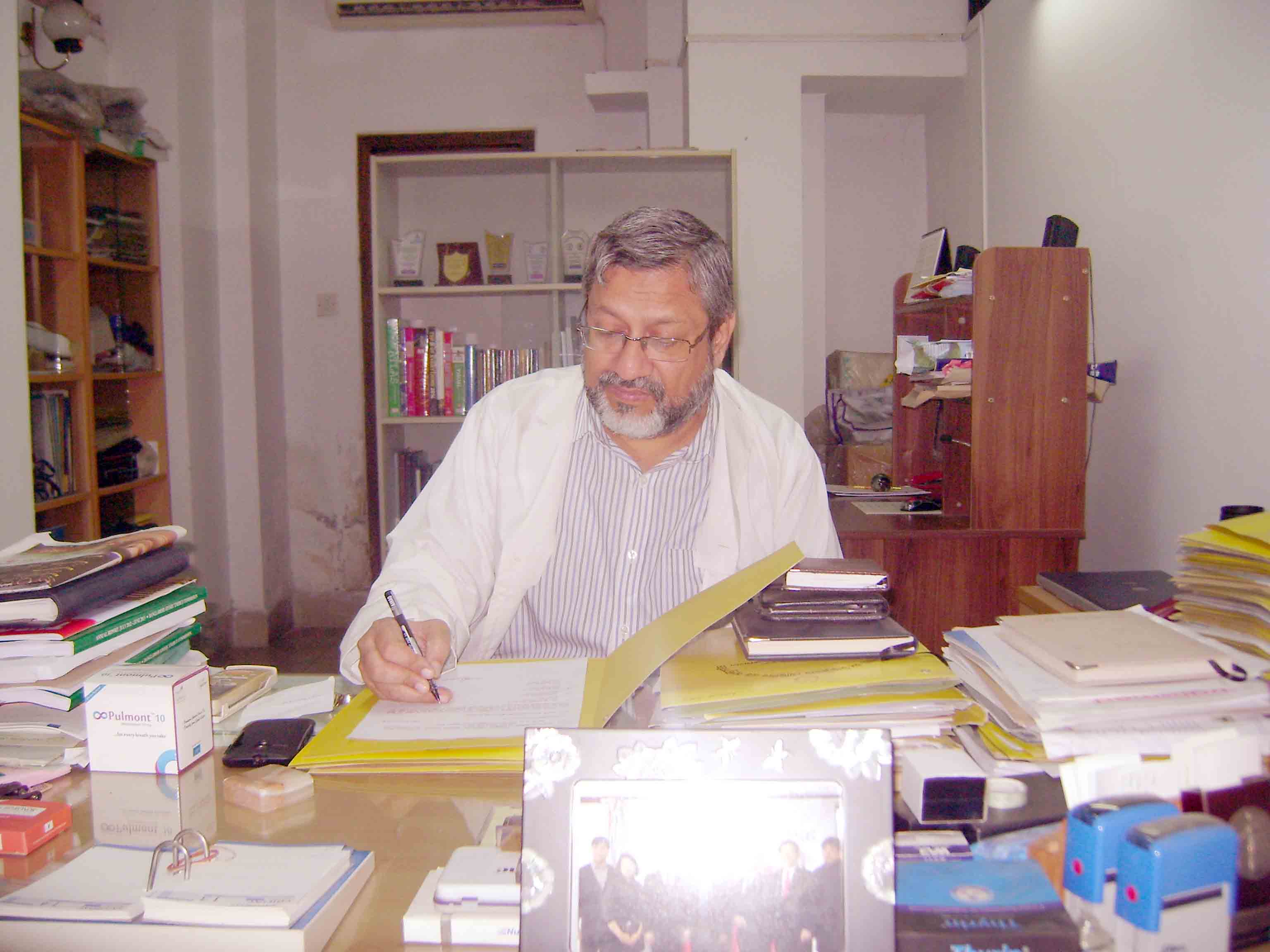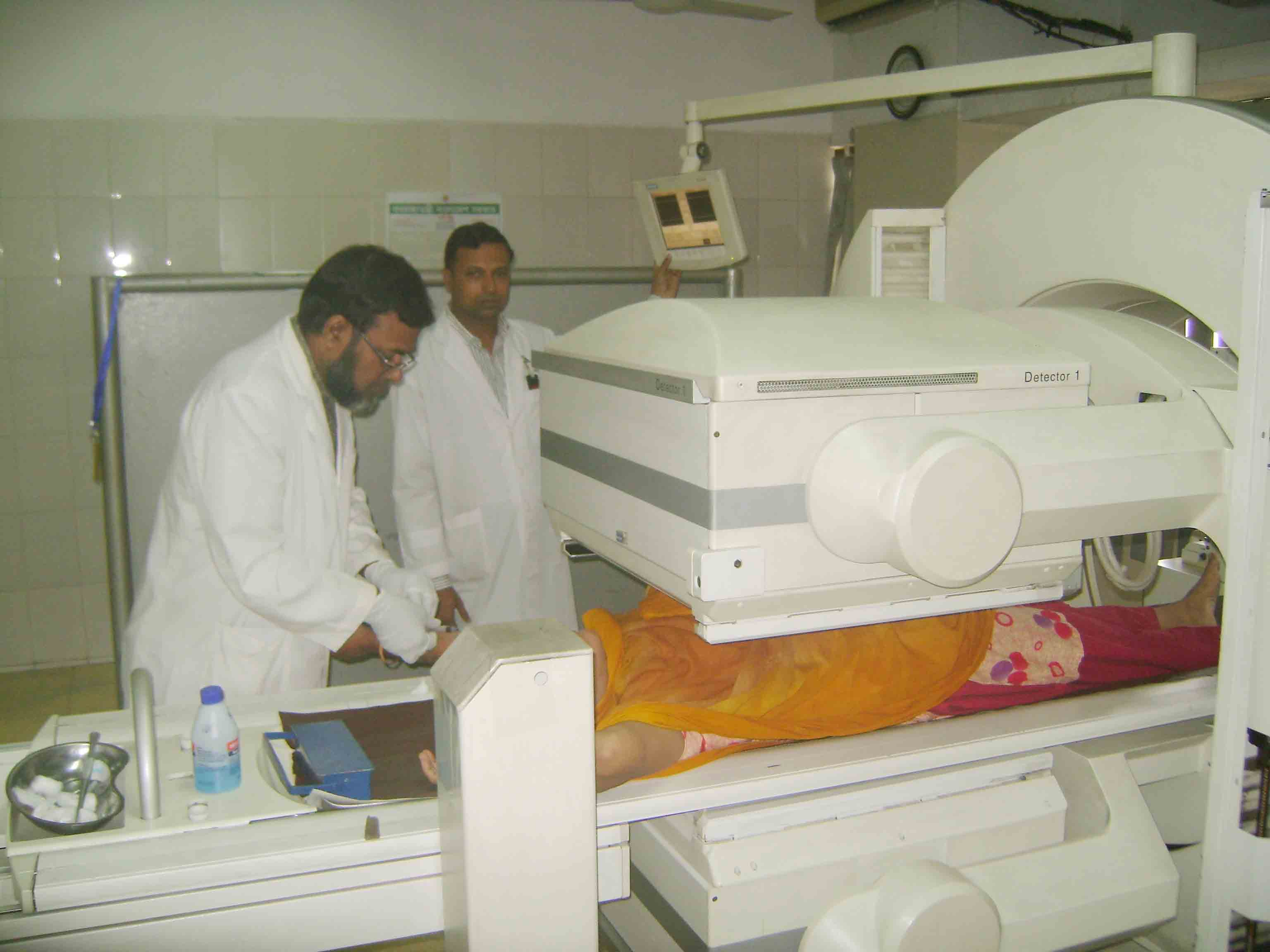-Professor Dr. Raihan Hussain
Interview by Abul Hasan
With the vision to render specialized medical services to the people of Bangladesh using nuclear technology, the Institute of Nuclear Medicine & Ultrasound (INMU) was first established in 1980 with a small section in block-A of the former Institute of Post Graduate Medicine & Research (IPGMR).
It is now situated in the newly constructed 18-storied Block- D of Bangabandhu Shekh Mujib (BSM) Medical University (former IPGMR) with about 60,000 sft floor space comprising four levels (7th-10th floors). Dr. Raihan Hussain, Professor & Chief Medical Officer and Head, Nuclear Cardiology Division, National Institute of Nuclear Medicine & Allied Science of BSMMU informed told us this in an interview with The Guardian.
In this context, he said that with the modern state of art single and dual head SPECT cameras, the institute is now capable of performing most modern scanning on oncology, cardiology, nephrology and cerebral studies.
He also added that keeping with ever increasing importance of Positron Emission Tomography (PET), the institute has installed a state-of-art PET-CT. This will give a new dimension to the endeavor to represent the institute as a “Centre of Excellence” in the field of nuclear medicine services in Bangladesh.
Professor Hussain replied to a number of questions on the different issues of nuclear medicine, its importance including the founding history of National Institute of Nuclear Medicine & Allied Science and its latest state of activities and facilities in Bangladesh. The excerpts of his valuable interview are presented here for our valued readers at home and abroad:
The Guardian: Please give us an idea when the concept of Nuclear Medicine was first introduced in the world.
Prof. Raihan Hussain: Nuclear Medicine is associated with a long history, to which scientists from various different fields such as physics, medicine, chemistry and engineering have contributed over the decades.
The birth of this medical specialty probably occurred somewhere between 1934 when artificial radioactivity was first discovered and 1946 when radionuclides were first produced for medical use by the Oak Ridge National Laboratory.
By the 1950s, the clinical use of nuclear medicine had become widespread as researchers and clinicians increased their understanding of detecting radioactivity and using radionuclides to monitor biochemical processes. Several researchers worked tirelessly to establish the efficacy, safety and diagnostic and therapeutic potential of this specialty. In 1971, the American Medical Association acknowledged nuclear medicine as an official medical specialty and in 1972 the American Board of Nuclear Medicine was formed.
The Guardian: Please tell us something about the history of Nuclear Medicine in Bangladesh.
Prof. Raihan Hussain: Plans were made for establishment of Nuclear Medicine (NM) department in the Dhaka Medical College in late 1950s under the Pakistan Atomic Energy Commission (PAEC). At that time this was the only medical college in the then East Pakistan and in 1958 the first NM facility was established in its premises in a tin-shed and was known as ‘Radioisotope Centre’. This was officially inaugurated in 1962.
But the department lacked equipment and regular supply of isotopes. In 1960’s two more centres were constructed, in Chittagong and Rajshahi. Bangladesh Atomic Energy Commission (BAEC) was established in 1973 and steps were taken for promotion of NM. Two new centres, in Dinajpur and Sylhet were established.
In 1980 the then Institute of Nuclear Medicine was established in the then Institute of Postgraduate Medicine and Research (IPGMR) campus in Dhaka. This marked as a milestone in the development of NM in the country. First ultrasound machine and computerised gamma camera of the country was established in 1981 and 1983 respectively. Gradually radioimmunoassay laboratory was established. Later on more centres were constructed all over the country.
At present there are 20 NM centres with 3 PET-CTs, 42 gamma camera/SPECTs having 95 NM physicians, 20 physicists, 10 radiochemists and 150 technologists. Since 1988 there are postgraduate courses in NM under Dhaka University and now under BSMMU. The Society of Nuclear Medicine, Bangladesh (SNMB) was formed in 1993 and functions actively for the promotion and consolidation of the subject. Annually it holds conferences and seminars to enrich the discipline among the members. It is also publishing “The Bangladesh Journal of Nuclear Medicine (BJNM)” regularly.
The Guardian: Would you also tell us when Bangbandhu Sheikh Mujib Medical University established the National Institute of Nuclear Medicine & Allied Science?
Prof. Raihan Hussain: With the vision to render specialized medical services to the people using nuclear technology, the Institute of Nuclear Medicine & Ultrasound (INMU) was first established in 1980 with a small section in block-A of the former Institute of Post Graduate Medicine & Research (IPGMR). It is now situated in the newly constructed 18-storied Block- D of Bangabandhu Shekh Mujib (BSM) Medical University (former IPGMR) with about 60,000 sft floor space comprising four levels (7th-10th floors).
With the modern state of art single and dual head SPECT cameras, the institute is now capable of performing most modern scanning on oncology, cardiology, nephrology and cerebral studies. Keeping with ever increasing importance of Positron Emission Tomography (PET), the institute has installed a state-of-art PET-CT. This will give a new dimension to the endeavor to represent the institute as a “Centre of Excellence” in the field of nuclear medicine services in Bangladesh
The Guardian: What is Nuclear Medicine? And why it called Nuclear Medicine?
Prof. Raihan Hussain: Nuclear Medicine is a medical specialty that is used to diagnose and treat diseases in a non-invasive safe and painless way. Nuclear Medicine procedures permit the determination of medical information that may otherwise be unavailable, require surgery, or necessitate more expensive and invasive diagnostic tests. The procedures often identify abnormalities very early in the progression of a disease long before same medical problems are apparent with other diagnostic tests. This early detection allows a disease to be treated sooner in its course when a more successful prognosis may be possible.
Nuclear medicine refers to medicine (a pharmaceutical) that is attached to a small quantity of radioactive materials (a radioisotope). This combination is called a radiopharmaceutical. There are many different radiopharmaceuticals available to study different parts of the body. Which radiopharmaceutical is used will depend upon the condition to be diagnosed or treated.
The Guardian: And say, for whom and why Nuclear Medicine is necessary?
Prof. Raihan Hussain: Nuclear Medicine is very important as it can be used for diagnosis as well as for treatment. During imaging of a part of the body, it uses functional and anatomical changes to diagnose. Nuclear Medicine can detect functional and anatomical abnormalities which is an advantage over other imaging modalities.
In treatment, short range ionizing radiations are used and as such these radiations are limited to the targeted tissues only. Radiopharmaceuticals used are linked to a tracer which is taken preferentially by a certain tissue or organ, thus decreasing the risk of radiation effect to other tissues which are not under investigation. Medical doctors should be encouraged to request for these diagnostic and treatment procedures as they are safe, have reasonable cost and are more sensitive than other imaging modalities.
The Guardian: Would you discuss how radiopharmaceuticals work?
Prof. Raihan Hussain: Radiopharmaceuticals are introduced into the patient’s body by injection, swallowing, or inhalation. The amount is very small. The pharmaceutical part of the radiopharmaceutical is designed to go to a specific place in the body where could be disease or an abnormality.
The radioactive part of the radiopharmaceutical that emits radiation, known as gamma rays (similar to x-ray), is then detected using a special camera called a gamma camera. This type of camera allows the nuclear medicine physician to see what is happening inside your body. During this imaging procedure, the patient is asked to lie down on a bed and then the gamma camera is placed a few centimeters over the patient’s body. Pictures are taken over the next few minutes. These images allow expert nuclear medicine physician to diagnose the patient’s disease.
The Guardian: What kind of diseases can nuclear medicine cure?
Prof. Raihan Hussain: Nuclear medicine can cure many different kinds of diseases. It can be used to identify abnormal lesions deep in the body without exploratory surgery. The procedures can also determine whether or not certain organs are functioning normally.
For example, nuclear medicine can determine whether or not the heart can pump blood adequately, if the brain is receiving an adequate blood supply, and if the brain cells are functioning properly or not. Nuclear medicine can determine whether or not kidneys are functioning normally, and whether the stomach is emptying properly. It can determine a patient’s blood volume, lung function vitamin absorption, and bone density. Nuclear medicine can located the smallest bone fracture before it can be seen on an X-ray.
It can also indentify sites of seizures (epilepsy), Parkinson’s disease, and Alzheimer’s disease. Nuclear Medicine can find cancers, determine whether they are responding to treatment and determine if infected bones will heal. After a heart attack, Nuclear Medicine procedures can assess the damage to the heart. It can also tell physicians how well newly transplanted organs are functioning.
The Guardian: Would you discuss the benefits of Nuclear Medicine?
Prof. Raihan Hussain: Nuclear Medicine examinations provide unique information-including details on both function and anatomic structure of the body that is often unattainable using other imaging procedures.
Benefits of nuclear medicine are:
- For many diseases, nuclear medicine scans yield the most useful information needed to make a diagnosis or to determine appropriate treatment, if any.
- Nuclear medicine is less expensive and may yield more precise information than exploratory surgery.
- Nuclear medicine offers the potential to identify disease in its earliest stage, often before symptoms occur or abnormalities can be detected with other diagnostic tests.
- By detecting whether lesions are likely benignor malignant, PET scans can provide an idea about further management or identify the best biopsy location.
- PET scans may provide additional information that is used for radiation therapy planning.
The Guardian: What are the limitations of Nuclear Medicine?
Prof. Raihan Hussain: The resolution of structures of the body with Nuclear Medicine may not be as high as with other imaging techniques, such as CT or MRI. However, Nuclear Medicine scans are more sensitive than other techniques for a variety of indications, and the functional information gained from nuclear medicine exams is often unobtainable by other imaging techniques.












